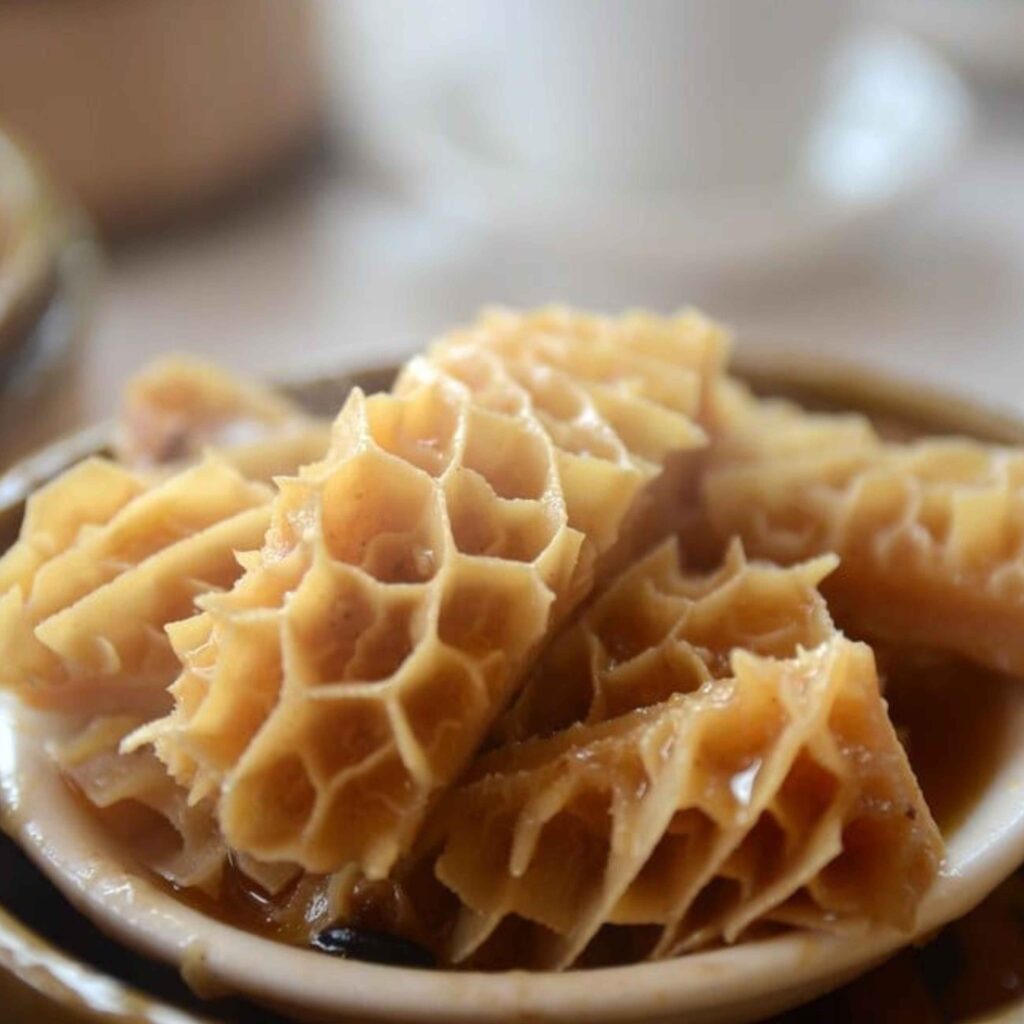

Exploring the History of Tripes
Introduction
Tripes, a dish often considered an acquired taste, holds a history that reflects the culinary traditions and resourcefulness of various cultures across the world. In this article, we delve into the intriguing origins and historical significance of Tripes, a dish made from the stomach lining of animals, which has both delighted and challenged the palates of adventurous eaters throughout history.
The Early Beginnings
A Dish of Necessity
The history of Tripes can be traced back to ancient times when people sought ways to utilize every part of an animal for sustenance. The concept of nose-to-tail eating was born out of necessity, as communities relied on making the most of available resources.
A Global Presence
Tripes, in various forms, have made appearances in the culinary traditions of different cultures. Whether it’s the “Tripe à la Mode de Caen” in France, “Menudo” in Mexico, or “Phá Lẩu” in Vietnam, this dish has been adapted and appreciated across the globe.
The Culinary Evolution
A Dish of Resilience
Tripes earned a reputation for being hearty and filling. They provided sustenance to people in times of scarcity and adversity. Over the centuries, this dish evolved as a symbol of resilience and resourcefulness in the face of challenging circumstances.
A Testament to Culinary Diversity
One remarkable aspect of Tripes is its ability to adapt to various culinary styles and flavors. Depending on the region and culture, Tripes have been prepared with an array of seasonings and spices, creating diverse and unique dishes.
Cultural Significance
A Connection to Heritage
In many cultures, Tripes are more than just a meal; they are a connection to heritage and tradition. Families often pass down their unique recipes and preparation methods, preserving a piece of their culinary history.
A Culinary Adventure
For adventurous eaters, trying Tripes can be a culinary adventure. The dish offers a window into the past, allowing diners to experience flavors and textures that have been savored for generations.
Conclusion
In conclusion, the history of Tripes is a testament to the ingenuity and adaptability of culinary traditions around the world. From its humble beginnings as a means of resourceful sustenance to its place on diverse dining tables, Tripes continue to challenge and intrigue adventurous palates. Its journey through time and across cultures is a reminder of the rich tapestry of global cuisine and the creativity of those who have embraced this unique dish.
For more information on Tripes, its various regional adaptations, and preparation methods, one can explore dedicated culinary resources and cultural studies.
- Serves: 4 People
- Prep Time: 20 minutes
- Cooking: 1.5 hours
- Difficulties: medium
Ingredients
For Cooking
- 1 pound cleaned and pre-cooked tripe
- 2tablespoons olive oil
- 1onion, finely chopped
- 2 cloves garlic, minced
- 1 carrot, diced
- 1 celery stalk diced
- 1cup tomato sauce
- 1cup beef or chicken broth
- 1 bay leaf
- 1 teaspoon dried thyme
- Salt and pepper to taste
- Chopped parsley for garnish
For Dressing
Nutritional Information
-
Calories
320 -
Total Fat
10g -
Saturated Fat
2g -
Cholesterol:
70mg -
Sodium
600mg -
Total Carbohydrates
30g -
Dietary Fiber
5g -
Sugars
10g -
Protein
25g
Procedure
Conclusion: Tripes, a dish with global appeal, offer a satisfying and wholesome dining experience. Whether you savor the classic recipe or experiment with a spicy variation, the tender tripe infused with rich flavors will leave your taste buds delighted. As you dive into the depths of this hearty dish, you’ll discover the culinary heritage of cultures that have cherished Tripes for generations
-
Mark As Complete
In a large pot, heat the olive oil over medium heat. Add the chopped onion, garlic, carrot, and celery. Sauté until the vegetables are soft and the onion is translucent
-
Mark As Complete
Add the pre-cooked tripe to the pot and stir to combine with the vegetables.
-
Mark As Complete
Pour in the tomato sauce and broth, and add the bay leaf and dried thyme. Season with salt and pepper to taste.
-
Mark As Complete
Bring the mixture to a gentle simmer, then cover the pot and let it cook for about 1 to 1.5 hours, stirring occasionally. The flavors will meld together and the tripe will become tender
-
Mark As Complete
Once the tripe is tender, remove the bay leaf and adjust the seasoning if necessary.
-
Mark As Complete
Serve the Tripes hot, garnished with chopped parsley.
Dawood Ali Mian
Chef Dawood brings a wealth of experience and a diverse culinary background to our kitchen. His culinary training spans the globe, from classic French techniques to contemporary fusion cuisine. Drawing inspiration from both traditional and modern culinary traditions, Chef Dawood’s creations are a harmonious blend of flavors and textures that tantalize the palate.
You also might like
No recipe were found.




